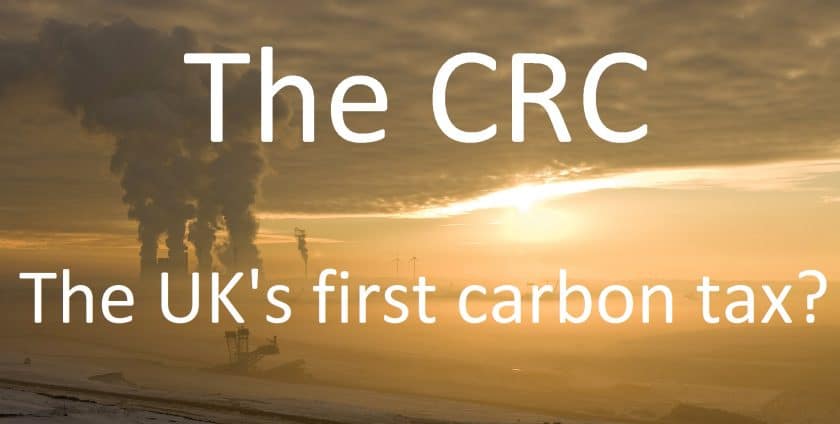
- By: admin
- 0 comment
Was the CRC the UK’s first carbon tax? Between 2012 and 2019 the UK operated a “carbon tax”, the Carbon Reduction Commitment Energy Efficiency Scheme (CRC EES). It was a carbon emissions reduction scheme, applied to organisations that consumed more than 6,000 MWh of electricity through half hourly meters. The CRC EES applied to both public and private sectors. It was estimated that the scheme would reduce carbon emissions by 1.2 million tonnes of carbon per year by 2020. The CRC EES was not technically a tax, participants were required to purchase and surrender allowances, but the effect was the same as a tax.
The scheme did come in for criticism, as some felt that it was limited by its overlap with the EU ETS and Climate Change Agreements. The Government withdrew the scheme in 2019, and the reason it gave for withdrawing the scheme was:
“Doing this will significantly streamline the business energy tax landscape by replacing it, in a revenue neutral way, with an increase in the Climate Change Levy.”
Now all large companies need to report their CO2e emissions under the Streamlined Energy and Carbon Reporting regulations (SECR). This means that it would be quite easy for the UK Government to apply a tax to those emissions. We would expect this tax to be set quite low initially and then increased each year at well above the level of inflation. The price per tonne of CO2e for the CRC EES in 2019 was £18.30. We would expect therefore that the Government would start a new tax at about £20 per tonne. We would also expect the Government to give plenty of warning of the implementation of such a tax. Perhaps as much as two years notice.
It makes sense for companies to measure their carbon footprint now, so they are aware of their carbon emissions. They can then forecast their liabilities for such a tax and choose whether to pay the tax or to invest in emissions reduction projects in good time to reduce their carbon tax significantly. Was the CRC the UK’s first carbon tax? Probably not, it certainly won’t be the last, but it does inform our thinking as to what a future carbon tax will look like.
Jean-François Lowes
jeanlowes@ghginsight.com
1st November 2021